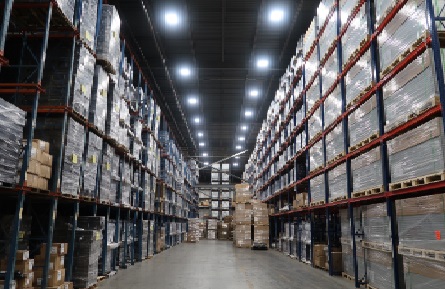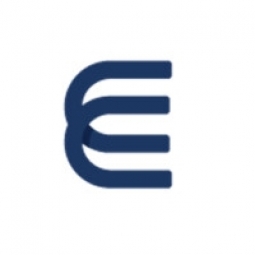Download PDF
Veeco Services: IoT-Enabled Lighting Retrofit Reduces Energy Costs by 75%

Technology Category
- Functional Applications - Warehouse Management Systems (WMS)
- Sensors - Optical Sensors
Applicable Functions
- Maintenance
- Warehouse & Inventory Management
Use Cases
- Picking, Sorting & Positioning
- Smart Lighting
Services
- System Integration
The Challenge
Veeco Services, a full-service logistics provider, was facing significant challenges with its warehouse lighting system. A lighting audit conducted in January 2019 revealed that the high-intensity discharge (HID) fixtures lighting Veeco’s 615,000 square feet warehouse were inefficient, costly to maintain, and emitted poor levels of lighting. The warehouse, which has 117 dock doors and more than 34,000 pallet locations, had recently upgraded to a new racking system that added more rows and narrow aisles. This change necessitated a revamp and retrofit of the existing HID lighting system to improve safety and efficiency. The challenge was to find a solution that would not only enhance lighting quality but also integrate with IoT technology for real-time adjustments based on environmental and occupancy changes.
The Customer
Veeco
About The Customer
Veeco Services is a full-service logistics provider that was founded in 1968. The company specializes in planning and executing shipments for national, regional, local, or consumer direct transactions. Veeco is headquartered in North Bergen, NJ, where it operates a 615,000 square foot warehouse. The warehouse is equipped with 117 dock doors and has more than 34,000 pallet locations. Veeco recently upgraded its racking system, adding more rows and narrow aisles, which necessitated a revamp of the existing lighting system.
The Solution
Veeco Services decided to replace the existing HID lighting system with a more efficient and flexible solution. A detailed photometric study of the new aisles and loading dock area was conducted, leading to the creation of an improved lighting design using 168-watt high bay LEDs. To integrate IoT capabilities, Veeco installed the Enlighted IoT platform, which included Enlighted’s smart sensors. These sensors allowed for real-time adjustments of lighting based on environmental and occupancy changes in the warehouse. The solution provided a user-friendly control interface for making changes and updates to lighting groups and profiles, allowing for flexible customization over time. This combination of high-efficiency LED fixtures and smart, IoT-enabled controls resulted in a significant reduction in energy and maintenance costs.
Operational Impact
Quantitative Benefit
Related Case Studies.
.png)
Case Study
Smart Street Light Network (Copenhagen)
Key stakeholders are taking a comprehensive approach to rethinking smart city innovation. City leaders have collaborated through partnerships involving government, research institutions and solution providers. The Copenhagen Solutions Lab is one of the leading organizations at the forefront of this movement. By bringing together manufacturers with municipal buyers, the Copenhagen Solutions Lab has catalyzed the development and deployment of next-generation smart city innovations. Copenhagen is leveraging this unique approach to accelerate the implementation of smart city solutions. One of the primary focus areas is LED street lighting.
.png)
Case Study
Single Network for Multiple Smart Grid Services (ComEd)
With the passage of Energy Infrastructure Modernization Act (EIMA), ComEd was required to improve its overall system reliability. In order to reach the goals outlined in the law, ComEd decided to leverage a common network for multiple applications, including advanced metering infrastructure (AMI), distribution automation (DA) and smart city programs. With a modernized communications infrastructure, the utility would be able to increase grid reliability by identifying problems faster, optimizing business processes, automating problem resolution and reducing truck rolls.

Case Study
American Eagle Achieves LEED with GE LED Lighting Fixtures
American Eagle Outfitters (AEO) was in the process of building a new distribution center. The AEO facility management team decided to look at alternate options for lighting layout that could provide energy and maintenance savings. AEO would need a full-time maintenance employee just to replace burned-out fluorescent tubes.

Case Study
IoT Powering A New Way to Light Streets with Bifacial Solar Panels
When James Meringer’s commercial contracting business experienced a rapid increase in solar projects, he also saw an opportunity to extend the benefits of solar by using the bifacial solar panels he’d become familiar with in new ways. Bifacial solar panels enable sunlight from both sides of the panel, making it a more efficient harvest of solar power. Seeing the panel’s power, James and his team set out to use the same technology for street lighting. Until now, solar street lights have served as utilitarian solutions that force designers to choose between form and function. The Mira Bella Energy team has changed that.

Case Study
DHL Supply Chain Growing Use of AR Glasses
A picker with an RF scanner is constantly looking at the gun to get pick commands, hitting the confirm button and doing things in sequential fashion which is time consuming. Warehouse operations costs add up to 20% of the total logistics costs for DHL.






